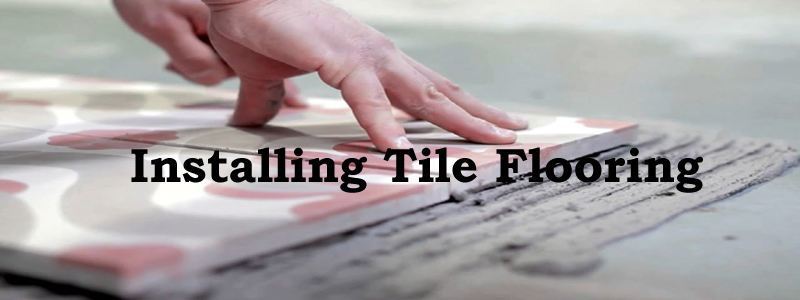| If it’s time for a new look in your home, installing ceramic tile flooring may be an option for you. You can get involved in installing tile flooring after buying a few simple tools and reading manufacturers’ instructions. Tile floors can be installed over a plywood subfloor (if the plywood is thick enough to keep the floor from flexing and breaking the tiles or grout), wood floors, vinyl, and even other tiles. Installing tile over cement flooring is worth looking into also. |
Installing tile flooring is a process that most homeowners need to consider at one time or another. Although the idea of installing ceramic tile flooring — or any type of tile flooring — intimidates many, the process really isn’t all that difficult.
Related Reading: ‘Best Tile Flooring’ – Check out our reviews and comparisons!
Installing ceramic tile flooring only involves properly preparing the area, applying adhesive, and then fitting the tiles on the floor. Whether you decide to go through this process yourself or hire a professional, installation of tile flooring has several advantages:
* less arduous task than you think it will be
* minimal disruption to the home
* long lasting results
* avoids extensive restoration
But its disadvantages include:
* tedious and time-consuming
Tile flooring is installed using tiles and adhesives (or setting materials, as they are sometimes called). Some manufacturers place adhesive directly to the tile, eliminating the need for it at installation. Customers simply peel away the paper backing and press the tile onto a clean, dry surface. In most cases, however, you will need a separate setting material. It’s important to make sure that you use TCA-approved (Tile Council of America) setting materials to ensure performance, safety, and quality.
There are several types of setting materials you may use when installing ceramic tile flooring — or any other type of tile, for that matter. Thin set is a cement that’s very useful when installing tile over cement flooring; it is inexpensive and easy to use. Grout is a cement used to fill in the joints or spaces between tiles. While some grout, such as epoxy grout, is difficult to use, most types of grouts are easy to use, even for the do-it-yourselfer. When selecting grout, it is important to choose the right color. In general, you want the grout to match the darkest color in your tile. This will look attractive and help ensure easier clean ups as well.
Organic adhesive or glue (aka organic mastic tile adhesive) is only used to install tiles to walls and counters, not for installing tile flooring. Latex bonding chemicals are a another type of setting material. These chemicals are often mixed with thin set to strengthen its hold. When installing tile over cement flooring, you will want to use latex bonding chemicals.
Tile flooring installation has changed a great deal over the centuries. In early times, cruder forms of cement or mortar were used and in some cases tiles were simply fitted together rather than being affixed to a surface. In recent years, setting materials — and ways of removing them — have become more advanced. Rather than having to remove old tiles, homeowners can now use powerful adhesives to install tile over other tiles and even wood, cement and vinyl. Plus, setting materials and sealants have become easier to use. Thanks to the handy directions available on most setting material labels, the average homeowner can install their own tile flooring without much hassle. Manufacturers are even trying to make the fumes of sealants and setting materials less noxious, improving not only the installer’s health, but also the home environment.
This is not to say that installing tile flooring is not without its drawbacks. If you have a larger surface to cover, it can still be backbreaking, knee-crushing tedious work. In many cases, homeowners want to remove previous tiles, which involves a long process of heating old tiles and scraping off old setting materials, or chipping them away (wear ear plugs if you go that route). Installing tile flooring can also expose homeowners to asbestos or other harmful chemicals that may be in the older tiles being removed. You should check with a qualified professional if you think the tiles you wish to remove may be toxic.
Despite its disadvantages, installing tile flooring has many benefits as well. Thanks to manufacturers’ attempts to court do-it-yourselfers, installing ceramic tile flooring — and other tiles — is easier and safer than ever before. Installing tile flooring can also be an extremely rewarding and valuable project. Most home experts claim that flooring can increase a home’s value considerably, making this type of flooring a great investment. Tile floors look great and offer many styling options.
If you are ready for a challenging home project that will bring you years of enjoyment and increase your home’s value, installing your own tile flooring may be for you.

Thank you for the encouraging article. Everyone (men at hardware stores) have tried to dissuade me…but the space I want to tile is only 5×5!